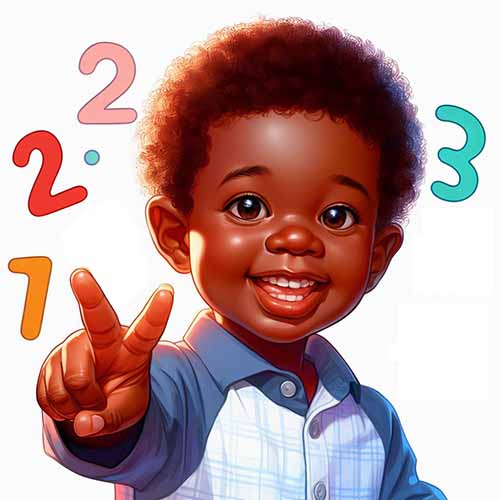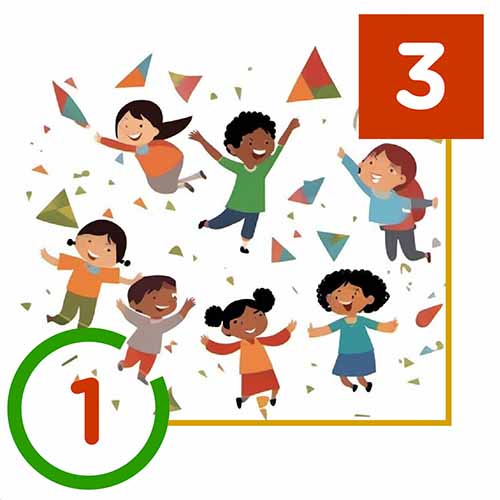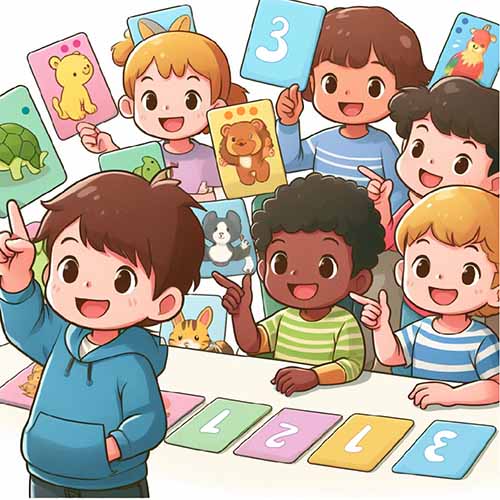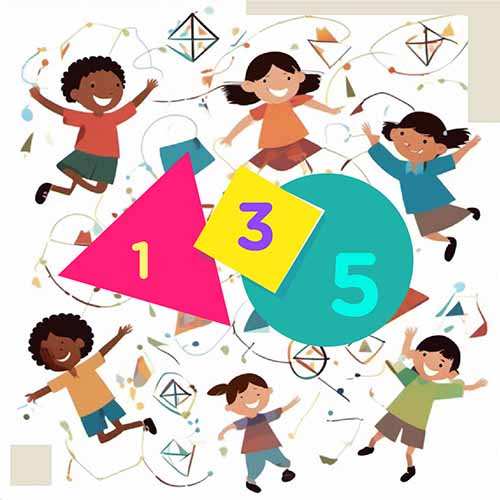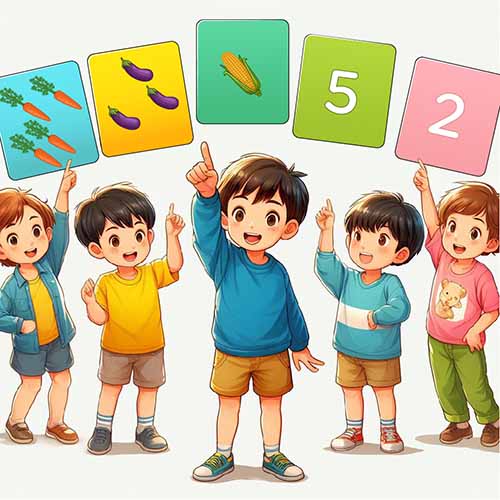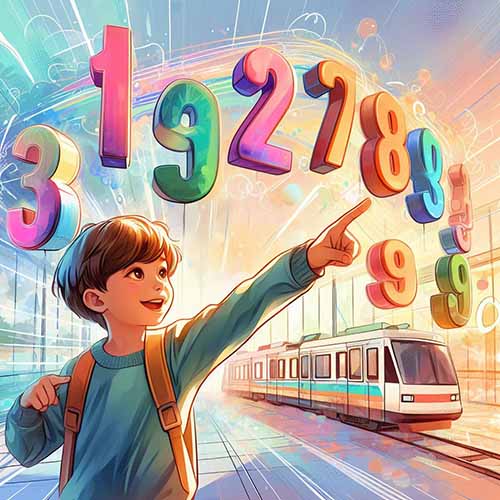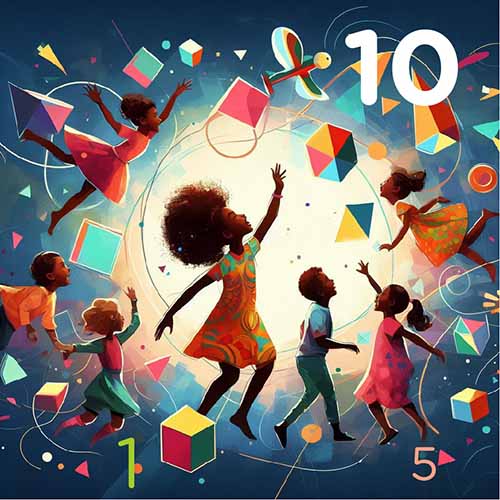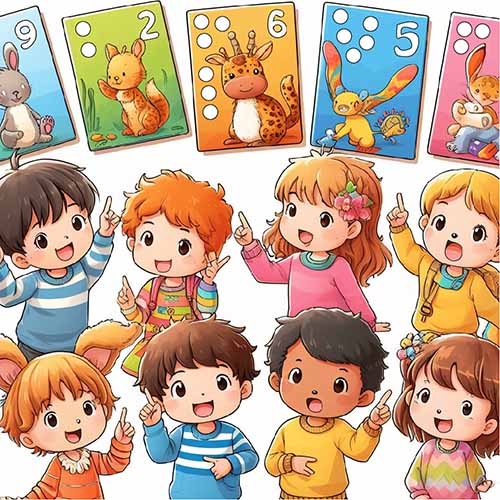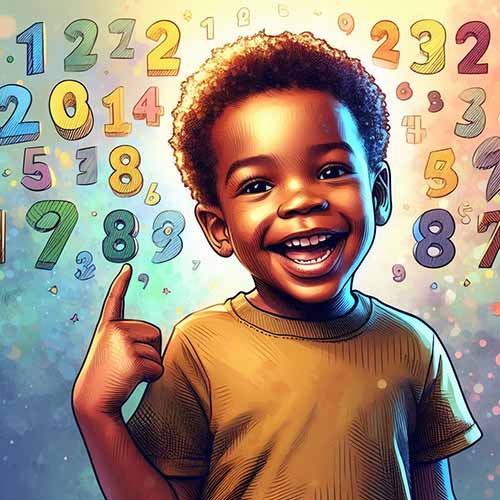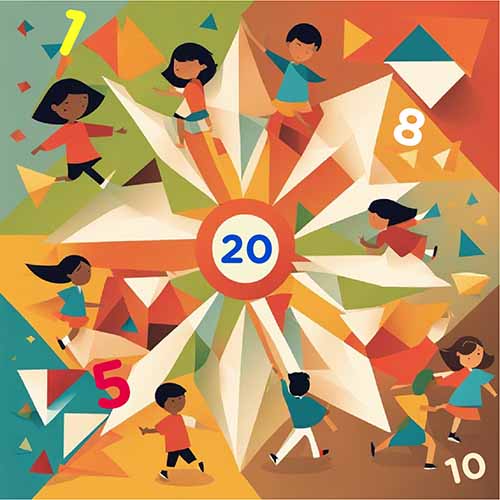How to Teach Numbers and Counting to Pre-K and K Students | Lesson Plans
-
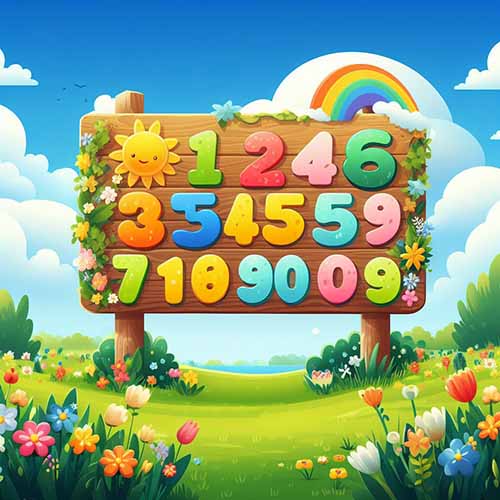
Numbers board - By BING -
Do you want to help your young students develop a strong foundation in math? Do you want to make numbers and counting fun and engaging for them? Do you want to use the best resources and materials to support their learning?
This page is for you if you answered yes to these questions. In this article, you will learn how to use MathSkills4Kids videos to teach numbers and counting in your classroom. You will also find web and YouTube links for more examples and ideas.
Introduction: The Challenges and Opportunities of Teaching Numbers and Counting in Early Education
Numbers and counting are essential skills for young children. They help them understand the world around them, develop logical thinking, and prepare them for more advanced math concepts.
-
However, teaching numbers and counting can also be challenging. Some of the common challenges are:
- How to introduce numbers and counting in a meaningful way that connects to students' prior knowledge and experiences
- How to differentiate instruction for different levels of readiness and provide appropriate scaffolding and support
- How to address misconceptions and difficulties that may arise from students' intuitive or informal understanding of numbers and counting
- How to motivate and engage students in learning numbers and counting through playful and interactive activities
- How to create a positive and supportive learning environment that encourages students' curiosity and confidence in learning numbers
-
Fortunately, many opportunities exist for teaching numbers and counting in early education. Some of the opportunities are:
- How to use MathSkills4Kids videos to introduce, reinforce, and review numbers and counting concepts
- How to use web links and YouTube video links for more examples and ideas
- How to use a variety of methods and strategies for teaching numbers and counting
- How to use a range of resources and materials for teaching numbers and counting
- How to use tips and tricks for making numbers and counting fun and easy
On this page, we will explore these opportunities in detail. We will show you how to use MathSkills4Kids videos to teach numbers and counting in your classroom.
-
NUMBERS & COUNTING
-
BROWSE THE LESSON PLANS
-
-
The Best Practices and Methods for Teaching Numbers and Counting
Teaching numbers and counting to pre-K and K students can be challenging but rewarding. Numbers and counting are foundational skills that help children develop mathematical thinking, problem-solving, and reasoning abilities. However, many young children struggle to understand number sense, quantity, and cardinality. They may also struggle to recognize, write, and order numbers and count objects, sets, and sequences.
How can teachers help students overcome these challenges and master numbers and counting?
The answer is to use effective, research-based practices and methods aligned with the early education standards and curriculum. These practices and methods should also be engaging, creative, and fun for teachers and students.One of the best resources that teachers can use to teach numbers and counting is MathSkills4Kids videos. MathSkills4Kids videos are short, animated, and interactive videos that cover various topics and skills related to numbers and counting. They are designed to capture the attention and interest of young learners, as well as to provide clear explanations, examples, and practice opportunities. Teachers can use MathSkills4Kids videos to introduce, review, or reinforce numbers and counting concepts and skills. They can also use them as a supplement or a differentiation tool for students who need extra support or challenge.
READ FURTHER
-
The Most Engaging and Creative Resources and Materials for Numbers and Counting
In addition to MathSkills4Kids videos, teachers can use other engaging and creative resources and materials to teach numbers and counting. These resources and materials can help teachers create a rich, stimulating learning environment that fosters number sense and counting skills. Some examples of these resources and materials are:
- Manipulatives: Manipulatives are physical objects that students can touch, move, group, or arrange to represent numbers and quantities. Examples of manipulatives are counters, cubes, beads, blocks, tiles, coins, dice, dominoes, cards, etc. Manipulatives can help students develop a concrete understanding of numbers and counting by allowing them to see, feel, compare, and manipulate them.
- Games: Games are activities that involve rules, goals, challenges, competition, or cooperation. Examples are board games, card games, dice games, bingo games, matching games, memory games, etc. Games can help students practice and reinforce numbers and counting skills by making them fun, motivating, and interactive.
- Songs: Songs are musical compositions that have lyrics or words. Examples of songs are nursery rhymes, chants, jingles, etc. Songs can help students learn and remember numbers and counting concepts using rhythm, rhyme, repetition, melody, etc.
- Books: Books are printed or digital materials that have text or images. Examples of books are picture books, storybooks, etc.
-
The Most Common Misconceptions and Difficulties in Numbers and Counting
One of the main challenges of teaching numbers and counting to young children is that they often have misconceptions and difficulties that prevent them from understanding the concepts and skills involved. Some of the most common misconceptions and difficulties are:
- Confusing the names of numbers with the quantity they represent. For example, some children may think that "two" means two objects of any kind, not two of the same kind.
- Counting objects without one-to-one correspondence. For example, some children may skip or repeat objects when counting or count objects that are not in a set.
- Not understanding the cardinality principle. For example, some children may not realize that the last number they say when counting a set of objects is the total number of objects in the set.
- Not understanding the order-irrelevance principle. For example, some children may think that changing the order of objects in a set changes the number of objects in the set.
- Not understanding the conservation principle. For example, some children may think that spreading out or grouping objects in a set changes the number of objects in the set.
- Not understanding the abstraction principle. For example, some children may not be able to count things that are not visible or tangible, such as sounds, actions, or ideas.
- Not understanding the unitizing principle. For example, some children may be unable to group objects into tens, hundreds, or thousands or use place value to represent large numbers.
These misconceptions and difficulties can hinder the development of number sense, which is the ability to use numbers flexibly and meaningfully in different contexts and situations. Number sense is essential for learning more advanced mathematical concepts and skills later.
-
The Most Useful Tips and Tricks for Making Numbers and Counting Fun and Easy
Fortunately, there are many ways to help young children overcome their misconceptions and difficulties and develop their number sense. Here are some of the most valuable tips and tricks for making numbers and counting fun and easy:
- Use MathSkills4Kids videos to introduce and reinforce numbers and counting concepts and skills. MathSkills4Kids videos are designed to be engaging, interactive, and informative for young learners. They use colorful animations, catchy songs, and clear explanations to teach numbers and counting in a fun and effective way. You can use MathSkills4Kids videos as a whole-class activity, a small-group activity, or an individual activity. You can also use them as a review, a practice, or an assessment tool.
- Use concrete materials and manipulatives to help children visualize and explore numbers and counting. Concrete materials and manipulatives are physical objects children can touch, move, arrange, and compare to represent numbers and counting. Some examples of concrete materials and manipulatives are counters, cubes, beads, blocks, tiles, rods, coins, dice, cards, dominoes, etc. You can use concrete materials and manipulatives to help children learn how to count objects in a set, compare quantities, identify patterns, compose and decompose numbers, etc.
- Use games and activities to make numbers and counting fun and meaningful. Games and activities are ways to involve children in numbers and counting playfully and purposefully. They can help children practice their skills, apply their knowledge, solve problems, communicate their thinking, etc. Some examples of games and activities are bingo, memory match, sorting, ordering, grouping, skip counting, etc. You can use games and activities to reinforce children's lessons from MathSkills4Kids videos or concrete materials and manipulatives.
- Use real-life situations and contexts to make numbers and counting relevant and authentic. Real-life situations and contexts are scenarios that children encounter in their daily lives that involve numbers and counting. They can help children connect what they learn in class to what they experience outside of class. Some examples of real-life situations and contexts are shopping, cooking, measuring, telling time,
-
Conclusion
Teaching numbers and counting to pre-K and K students is a crucial skill for their academic success and an excellent opportunity to spark their curiosity and enthusiasm for math. Using the best practices and methods, the most engaging and creative resources and materials, and the most valuable tips and tricks, you can help your students overcome the common misconceptions and difficulties in numbers and counting, making them fun and easy to learn.
One of the best resources you can use to teach numbers and counting is MathSkills4Kids videos. These videos are designed to capture the attention and interest of young learners with colorful animations, catchy songs, and interactive games. They cover many topics, from counting to 20, comparing numbers, and more. They also align with the Common Core Standards for Mathematics, so you can ensure your students learn the essential skills they need.
Thank you for reading this page on how to teach numbers and counting to pre-K and K students using MathSkills4Kids videos. We hope you found it helpful and informative. If you have any questions or feedback, please contact us. Moreover, do not forget to subscribe to our channel for more fantastic math videos for kids!
Please CLICK THE SHARE BUTTON to allow others to benefit from this content!
Happy teaching!
